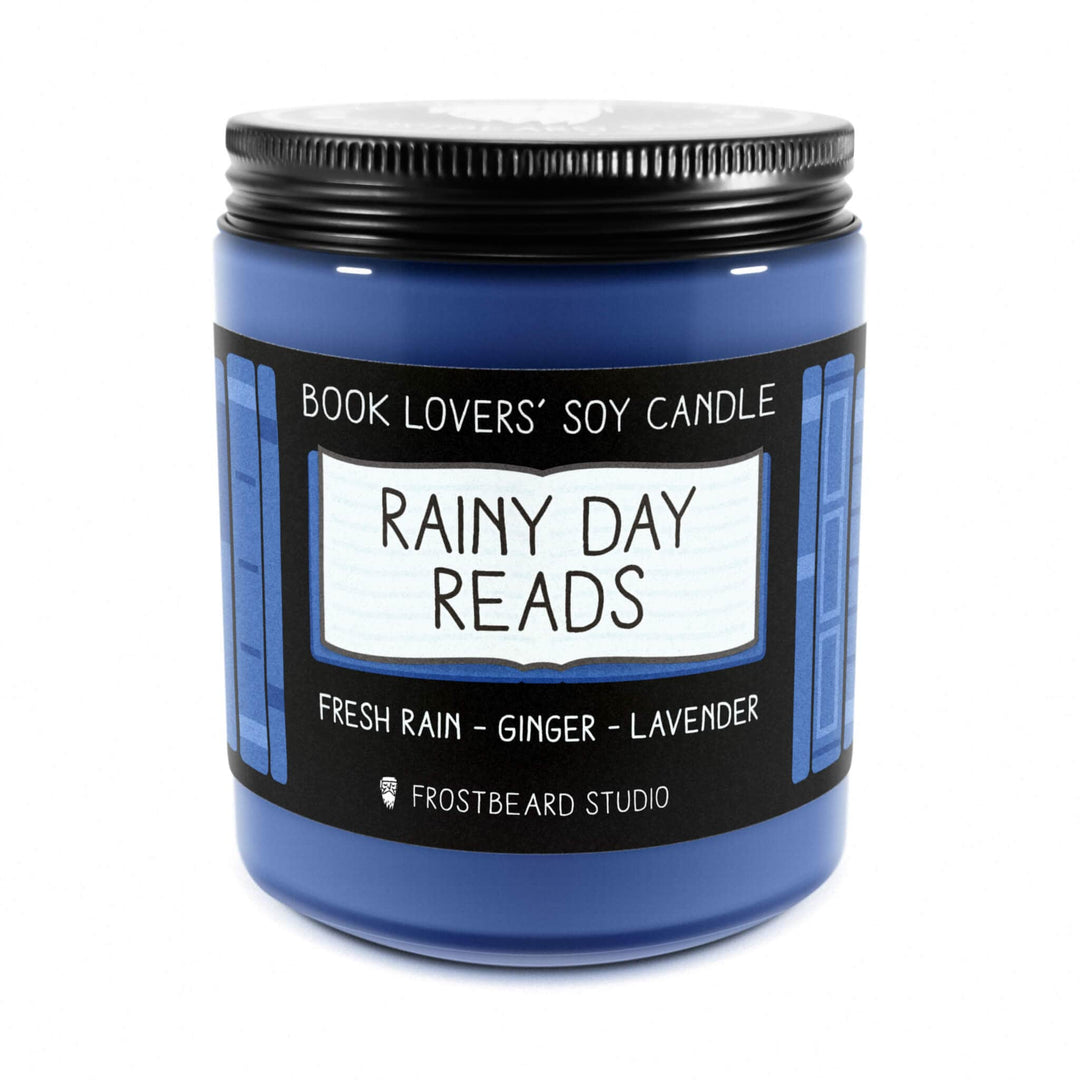Exploring the Depths: Popular Themes in Literature
What are some literary themes? This is a question many book lovers explore to deepen their reading experience. Literary themes are the central ideas explored in a story. They go beyond the plot and characters, touching on deeper truths about humanity and society. Here are some common literary themes:
- Love: Romance and relationships.
- Death: Mortality and the circle of life.
- Power: Corruption and influence.
- Faith: Belief and doubt.
- Identity: Self-findy and personal growth.
- Family: Relationships and dynamics.
Themes are the soul of literature, connecting readers to the underlying messages within stories.
What is a Literary Theme?
A literary theme is the central idea or underlying message that an author wants to convey through their story. It's not just about what happens in the plot, but what the story is really about on a deeper level.
Central Idea and Deeper Meaning
The central idea of a theme is the main topic or subject that the narrative explores. For example, themes like love, power, and identity are common in many stories. However, the deeper meaning is what the author is saying about that topic. It's the why behind the story.
Take The Great Gatsby by F. Scott Fitzgerald, for example. While the plot revolves around Jay Gatsby's pursuit of Daisy Buchanan, the underlying message is about the American Dream and its often illusory nature. Fitzgerald uses Gatsby's journey to comment on the dream's unattainable and sometimes corrupting aspects.
Author’s Perspective
Authors use themes to express their views on life, society, or human nature. These themes can be intentional, where the author sets out to explore a specific idea, or they can emerge naturally through the storytelling process.
For example, in George Orwell's 1984, Orwell's intent was to warn about the dangers of totalitarianism and extreme political ideology. The theme of surveillance and loss of individual freedom is clear and deliberate, serving as a cautionary tale for readers.
Literary Tools
Themes are explored through a variety of literary tools, such as:
- Characters: Their actions, struggles, and growth.
- Plot: The sequence of events and conflicts.
- Settings: The time and place where the story occurs.
- Conflict: The challenges and obstacles characters face.
- Word Choice: Specific language that evokes certain ideas.
- Literary Devices: Metaphors, imagery, symbolism, and more.
For instance, in To Kill a Mockingbird by Harper Lee, the theme of racial justice is explored through the characters' experiences and the setting of the American South during the 1930s. The conflicts and trials faced by the characters reveal deeper truths about justice and morality.
In Summary
A theme is an idea plus an opinion. It's the author's specific viewpoint on a central idea, woven throughout the story using various literary tools. This deeper meaning is what connects readers to the story, making them think and feel beyond the surface level of the plot.

Next, let's explore some common themes in literature and how they shape our understanding of the stories we love.
Common Themes in Literature
Love
Love is a powerful and universal theme that manifests in many forms: romance, familial love, friendship, and even love for oneself. Stories often explore the complexities of relationships, the sacrifices people make for love, and the pain of unrequited or forbidden love.
Example: Romeo and Juliet by William Shakespeare is a timeless tale of forbidden love. The societal constraints and family feuds that keep the lovers apart highlight the intense emotions and tragic consequences of their relationship.
Death
The theme of death often digs into the inevitability of mortality, the grief that follows, and the circle of life. It can evoke fear, acceptance, or a deeper understanding of life's transient nature.
Example: In Charlotte’s Web by E.B. White, death is presented as a natural part of living. The story begins and ends with death, with Wilbur escaping death at the start, leading to events that culminate in the death of Charlotte.
Power
Power is a common theme that examines corruption, control, authority, and influence. Stories often explore how power is attained, retained, and its impact on individuals and societies.
Example: Frankenstein by Mary Shelley is a classic exploration of hubris, where Victor Frankenstein's excessive self-confidence and defiance of natural laws lead to disastrous consequences.
Faith
Faith can refer to religious belief, spirituality, or self-faith. Stories with this theme often explore belief, doubt, and the lengths to which people will go when they have faith in something.
Example: The Poisonwood Bible by Barbara Kingsolver explores the great lengths a family will go due to their faith in their missionary father, and what happens when they begin to lose that faith.
Beauty
Beauty in literature can be about inner beauty, societal standards, unnoticed beauty, or art. It challenges readers to look beyond appearances and appreciate deeper qualities.
Example: In The Picture of Dorian Gray by Oscar Wilde, the protagonist's obsession with physical beauty leads to his moral and spiritual decay, highlighting the dangers of valuing appearance over substance.
Survival
Survival themes often place characters in life-threatening situations, highlighting their resilience and human nature. These stories can be set in dystopian worlds or more realistic settings where survival is a daily struggle.
Example: The Hunger Games by Suzanne Collins revolves around survival in a dystopian society, where characters must steer life-threatening challenges and political rebellion.
Identity
Identity themes explore self-findy, personal growth, societal roles, and coming of age. These stories often follow characters as they grapple with who they are and who they want to become.
Example: In Jane Eyre by Charlotte Brontë, Jane’s journey from a troubled orphan to a strong, independent woman is a classic coming-of-age tale, exploring self-findy and resilience.
Family
Family themes examine relationships, conflict, support, and dynamics within family units. Stories often explore how family shapes individuals and how they steer tradition versus change.
Example: Little Women by Louisa May Alcott showcases the power of family as the characters rely on each other, supporting one another through times of hardship to reach a happy ending.

These common themes in literature offer a window into the human experience, helping us understand ourselves and the world around us.
Next, let's explore some universal themes in literature and how they shape our understanding of the stories we love.
Universal Themes in Literature
Universal themes are ideas that resonate across cultures and time periods. They help us understand the world and ourselves better. Let's explore some of these themes.
Human Nature
Human nature explores our behavior, instincts, and morality. It asks questions like: What makes us good or bad? How do we decide what's right or wrong?
Example: In Lord of the Flies by William Golding, a group of boys stranded on an island reveal the darkness within human nature as they descend into savagery.
Free Will
Free will is about choices and destiny. It examines how much control we have over our lives.
Example: In Macbeth by William Shakespeare, Macbeth's choices lead to his downfall, raising questions about fate and autonomy.
Self-Awareness
Self-awareness involves introspection and understanding one's personal identity. It's about knowing who you are.
Example: In The Catcher in the Rye by J.D. Salinger, Holden Caulfield's journey is one of self-findy and understanding his place in the world.
Hope
Hope is about optimism and dreams for the future. It's what keeps characters going in tough times.
Example: In The Shawshank Redemption by Stephen King, Andy Dufresne's hope for freedom keeps him going through years of imprisonment.
Jealousy
Jealousy involves envy and rivalry. It often leads to conflict and competition.
Example: In Othello by William Shakespeare, Iago's jealousy drives him to manipulate Othello, leading to tragic consequences.
Justice
Justice explores fairness and retribution. It looks at how societies enforce laws and what happens when justice is denied.
Example: In To Kill a Mockingbird by Harper Lee, the trial of Tom Robinson examines racial injustice in the American South.
Fear
Fear deals with anxiety and survival. It often involves facing the unknown or confronting phobias.
Example: In 1984 by George Orwell, the fear of constant surveillance and government oppression controls society.
Freedom
Freedom is about liberty and independence. It examines the struggle against oppression.
Example: In The Trips of Huckleberry Finn by Mark Twain, Huck's journey down the river represents a quest for freedom from societal constraints.
Friendship
Friendship explores bonds, loyalty, and support. It's about the relationships that help us through life.
Example: In Harry Potter by J.K. Rowling, the friendships between Harry, Ron, and Hermione are central to their success against evil.
Bravery
Bravery involves courage and heroism. It's about overcoming fear and standing up for what's right.
Example: In The Hobbit by J.R.R. Tolkien, Bilbo Baggins shows bravery as he faces various dangers on his quest.
Happiness
Happiness is about joy and fulfillment. It explores what makes life worth living.
Example: In Pride and Prejudice by Jane Austen, the characters seek happiness through love and personal growth.
Passion
Passion involves intensity and dedication. It's about being deeply committed to something or someone.
Example: In Wuthering Heights by Emily Brontë, Heathcliff's passionate love for Catherine drives much of the plot.
Kindness
Kindness is about compassion and empathy. It shows the importance of being generous and understanding.
Example: In A Christmas Carol by Charles Dickens, Scrooge's change highlights the power of kindness and generosity.
Trust
Trust involves reliability and faith. It looks at how trust is built and what happens when it's broken.
Example: In The Kite Runner by Khaled Hosseini, the betrayal and eventual redemption between Amir and Hassan explore the theme of trust.
War
War deals with conflict and violence. It examines the causes and consequences of war.
Example: In War and Peace by Leo Tolstoy, the impact of the Napoleonic Wars on Russian society is explored in great detail.
These universal themes in literature help us connect with stories on a deeper level, making them relevant and meaningful across different cultures and eras.
Next, let's look at theme examples in popular novels and how they bring these universal ideas to life.
Theme Examples in Popular Novels
The Great Gatsby
In The Great Gatsby by F. Scott Fitzgerald, the American dream is a central theme. The novel explores the idea that anyone can achieve success and happiness through hard work. However, as the story unfolds, we see the darker side of this dream. Gatsby's wealth and status are built on questionable means, and his pursuit of Daisy Buchanan leads to tragedy. The novel also digs into social class, identity, gender, and race, offering a critique of the American society of the 1920s.
"Gatsby believed in the green light, the orgastic future that year by year recedes before us."
Romeo and Juliet
William Shakespeare's Romeo and Juliet is a classic tale of forbidden love. The young lovers come from feuding families, and their relationship is doomed from the start. The themes of family, tragedy, and fate are interwoven, highlighting the devastating consequences of their love.
"For never was a story of more woe than this of Juliet and her Romeo."
Charlotte’s Web
E.B. White's Charlotte’s Web is a touching story that explores themes of death, mortality, friendship, and sacrifice. The spider Charlotte goes to great lengths to save her friend Wilbur, the pig, from being slaughtered. The story teaches readers about the cycle of life and the impact of true friendship.
"You have been my friend. That in itself is a tremendous thing."
Nineteen Eighty-Four
George Orwell's Nineteen Eighty-Four digs into the themes of totalitarianism, repression, censorship, and surveillance. The novel introduces the concept of Big Brother, a symbol of oppressive government control. Through the protagonist Winston Smith, Orwell explores the impact of a society where individual freedoms are stripped away.
"Big Brother is watching you."
A Game of Thrones
In George R. R. Martin's A Game of Thrones, themes of power, family, love, and death are central to the story. The novel's multiple points of view provide a rich mix of how different characters experience and wield power. The complex family dynamics and the constant threat of death create a gripping narrative.
"When you play the game of thrones, you win or you die."
The Hunger Games
Suzanne Collins' The Hunger Games focuses on themes of survival, rebellion, friendship, and social class. Katniss Everdeen's fight to survive the brutal Hunger Games highlights the harsh realities of a dystopian society. The story also emphasizes the power of rebellion and the importance of standing up against oppression.
"May the odds be ever in your favor."
Wolf Hall
Wolf Hall by Hilary Mantel explores themes of power, family, faith, and duty. The historical novel follows the life of Oliver Cromwell as he rises to become the most powerful minister in King Henry VIII’s council. The story digs into the complexities of political power and the personal sacrifices required to maintain it.
"Man is wolf to man."
These popular novels demonstrate how literary themes can provide depth and meaning to a story, making them resonate with readers across different times and cultures. Next, we'll explore frequently asked questions about literary themes to deepen our understanding.
Frequently Asked Questions about Literary Themes
What are some literary themes?
Literary themes are the underlying messages or central ideas in a story. They explore complex ideas and offer insights into human nature, society, and life. Here are some common examples:
- Love: Romance, relationships, and unrequited love. Think of Romeo and Juliet.
- Death: Mortality, grief, and the circle of life. Seen in Charlotte’s Web.
- Power: Corruption, control, and authority. A key theme in A Game of Thrones.
- Faith: Belief, doubt, and spirituality. Explored in Wolf Hall.
- Survival: Resilience and life-threatening situations. Central to The Hunger Games.
- Identity: Self-findy and personal growth. Found in many coming-of-age stories.
These themes are universal, making them relatable to readers across different cultures and times.
How do you come up with a literary theme?
Creating a literary theme starts with the story's core idea. Here are some steps to guide you:
- Characterization: Develop well-rounded characters. Their desires, conflicts, and growth often hint at the theme.
- Plot: Design a plot that challenges your characters. The events and conflicts should reflect the theme.
- Literary Elements: Use symbols, motifs, and settings to reinforce the theme. For example, the One Ring in The Lord of the Rings symbolizes power and corruption.
- Author's Perspective: Think about the message you want to convey. Your personal views can shape the theme.
By intertwining these elements, you can create a cohesive theme that adds depth to your story.
What is the difference between theme and moral?
While theme and moral are related, they are not the same:
- Theme: The central idea or underlying message of a story. It explores complex topics without providing a direct lesson. For example, the theme of To Kill a Mockingbird is justice and moral integrity.
- Moral: A specific lesson or advice that the story conveys. It tells readers what they should or should not do. For instance, the moral of The Tortoise and the Hare is that slow and steady wins the race.
In summary, a theme offers a broader exploration of ideas, while a moral provides a clear-cut lesson.
Next, let's dive deeper into how these themes manifest in popular novels and why they resonate so strongly with readers.
Conclusion
Themes in literature are the heart and soul of any story. They connect us to the characters, plot, and the author's deeper messages, making each reading experience meaningful and memorable.
When we read a book, the themes help us see beyond the surface. They challenge us to think critically about life, human nature, and society. For instance, the theme of love in Romeo and Juliet makes us ponder the power and tragedy of romance. Similarly, the theme of power in A Game of Thrones reveals the complexities of authority and corruption.
At Frostbeard Studio, we believe that understanding these themes can enrich your reading journey. Our literary-inspired candles are crafted to complement these themes, adding a sensory layer to your experience. Imagine reading Charlotte’s Web with a candle that evokes the tranquility of a farm, or diving into Nineteen Eighty-Four with a scent that captures the essence of rebellion and surveillance.
By connecting with the deeper meanings of themes, we can better appreciate the stories we love. Whether it's the struggle for survival in The Hunger Games or the quest for identity in a coming-of-age novel, themes help us understand ourselves and the world around us.
Thank you for joining us in exploring the depths of popular themes in literature. We hope this guide has inspired you to look closer at the stories you read and to enjoy them even more with the perfect candle from Frostbeard Studio.
Happy reading!








